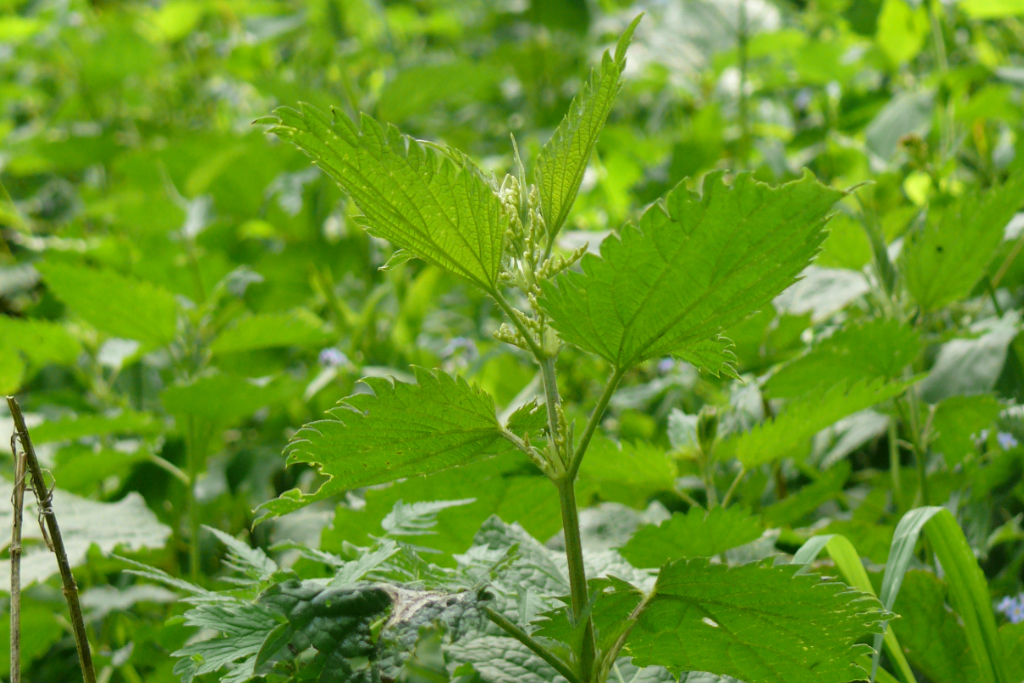L’ortie
Urtica dioica L.
Urticaceae
There are three nettle species in France
- The dioic stinging nettle, Urtica dioica L., which is the most common one.
- The burning nettle, Urtica urens L., with leaves as broad as they are long and with simple and unbranched inflorescences.
- The “nettle-pills”, Urtica pilulifera L., with remarkable fruits, similar to small sea urchins.
As for the nettle, it is not a nettle but a lamier, Lamium album L.
Dioecious nettle is the most widely used. It is the utlimate “weed”, invasive, going where it wants and covered with stinging hairs. Victor Hugo writes in his Contemplations: “I like the spider, I love the nettle, because they are hated”
Yet it is a wild plant with multiple virtues, considered by herbalists as “green gold”!
The nettle leaf is rich in protein, nearly 40% by dry weight, more than soybeans or meat. In addition, nettle proteins contain 18 of the 20 existing amino acids of which 8 are essential for humans.
Fresh, nettle also contains many vitamins: C, E, B, provitamins A. It is the green vegetable richest in vitamin C.
What about minerals? 100g of nettle cover our needs for calcium, iron, magnesium, manganese and potassium and provides its fair share of copper, zinc and phosphorus.
Nettle is therefore a super-food or even a food that is suitable for everyone, especially in the event of fatigue, for vegetarians, pregnant or nursing women, teenagers, or during recovery. Nettle is also used in veterinary medicine, as a supply of minerals for animals in late gestation or lactation.
The properties of the nettle are numerous, and modern researches still bring forth new virtues, the principal of which are as follows: the leaves are diuretic, depurative, anti-inflammatory and remineralizing. They are used especially in cases of fatigue, joint pain and rheumatism. They also promote the production of breast milk and can be added to a tea of fennel and dill to support breastfeeding. They are also antiallergic and can constitute a background treatment of allergic rhinitis or eczema.
In external use, the leaves macerated in vinegar strengthen the scalp and hair (one tablespoon in the rinse water).
The roots have different properties: they fight the inflammation of the prostate and relieve the urinary disorders.
Eating fresh neetles
To make the most of the virtues of nettle, why not consume it fresh? But still we must avoid the painful stings…
How? With a little botany, plant biology and chemistry!
Stinging nettle hairs are located on the top of the leaves and stem. Simply take the leaf from below by folding it in the center to avoid pitting. That’s for biology.
Now chemistry. The urticating needles of the nettle are brittle and contain volatile acids which are thus released by simply rubbing the leaf. To eliminate them nothing is more simple: just roll the leaf for two minutes and they will evaporate. All is left to do is to place the leaf in the mouth, avoiding contact with the lips … and eat it!
